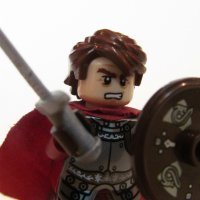Search the Community
Showing results for tags 'Pendulum'.
Found 5 results
-
(640x480).thumb.jpg.97b97cf52b621694f8ece5448230e728.jpg)
Motorized Harry Potter Clock Tower with Pendulum 75948 (Instruction)
Gideon8 posted a topic in LEGO Licensed
I have always wanted the original 4757 Hogwarts Castle because it had a clock and a pendulum! I found its clock works to be a GREAT mystery until I could look into its instruction manual! Lego was so gracious to create the new Clock Tower and release it! I loved it very much. However, a great feature was missing: the pendulum! I decided to make minimal modifications for adding a pendulum and even motorizing it! My Clock Tower's clock work would not be a GREAT mystery because I made a video which showed how I built it! -

[MOC] Pendulum Waves
dawidmarasek posted a topic in LEGO Technic, Mindstorms, Model Team and Scale Modeling
Eight different lengths pendulums create waves. If you like this model please add your support on LEGO Ideas page https://ideas.lego.com/projects/723b9502-862f-4ec7-9efe-9a61ab24d72a -

A practical LEGO technic clock
dsharlet posted a topic in LEGO Technic, Mindstorms, Model Team and Scale Modeling
I've built a few clocks with LEGO over a few years, but none of them have been practical to use. To be practical, it needs to run for at least 24 hours, and be really easy to rewind. Having to spend more than 10-20 seconds with a winding wheel is too much of a pain (and my last clock took way longer than that!). The main difference between this clock and my other clocks is the drive weight is on a chain, and the chain can be simply pulled back through the clock to rewind it (driving a ratchet instead of the drivetrain), solving the ease of rewinding problem. Some other details: The escapement is a Galileo escapement with a 40 tooth wheel The hands can be moved forward by hand to set the time via a differential ratchet The drive weight is ~600g (11 boat weights x 53g, plus the parts to hold it together), the chain is a loop connected to the bottom of the weight to balance the drive weight The ratio between the chain and the escapement is 416:1 (40:24, 2:1 differential, 40:8 x 3) The weight falls 2.59cm/hour, so with 3 feet of drop, the clock will run for about 35 hours (it's currently mounted a little over 5 feet off the floor, so it could be given enough chain to run for about 60 hours). It should be accurate to within a minute per 24 hours, but it will take some time to dial in the position of the bob on the pendulum The single thing that helps the most with efficiency is a knife edge suspension for the pendulum, I learned this technique (and probably other techniques too) from https://www.youtube.com/user/KEvronista and https://www.youtube.com/user/BenVanDeWaal Here's a video: And here's a slow motion video of the escapement: I hope you find it interesting! I wanted to share the chain drive technique because I haven't seen it before, and it really makes a LEGO clock a lot more fun and less of a pain in the butt than a string on a spool :)- 1 reply
-
- escapement
- galileo
-
(and 3 more)
Tagged with:
-
"I longed, yet dared not, to employ my vision. I dreaded the first glance at objects around me. It was not that I feared to look upon things horrible, but that I grew aghast lest there should be nothing to see. At length, with a wild desperation at heart, I quickly unclosed my eyes. My worst thoughts, then, were confirmed. The blackness of eternal night encompassed me." Just a little moc depicting a scene in Edgar Allan Poe's horror story "The Pit and the Pendulum". Let me know what you think! ;)
-

[MOC] Fully automatic Clock
Gonkius posted a topic in LEGO Technic, Mindstorms, Model Team and Scale Modeling
This is a fully automatic clock that was finished end of 2014. So, why do I call it "fully automatic"? - The clockwork runs as a normal mechanical clock with a pendulum and counterweight. - There is a motor that winds the clock every hour. - The speed of the clock is adjusted once a day using the Mindstorms unit. The speed is adjusted by changing the length of the pendulum. In total, the clock runs for itself without any assistance, and it shows the right time, even if it is build using only LEGO bricks. (Apart from the string to the counterweight) There have been many challenges in this design. My main focus, except the obvious goal to make everything to work, was to make this as compact as possible. The whole clockwork fits inside 14x14x14 studs. I did a short video to show the "action": The two sensors are used for: 1. Stop when the counterweight is fully winded 2. Give feedback from the minute hand rotation back to the Mindstorms unit. The counterweight is made out of 12 train/boat weights and is about 0.68kg. Winding is done through a differential to avoid interruptions during the winding. There are two medium motors inside the clockwork for the winding and adjustment. The Mindstorms unit is hidden in the base behind a hatch: WIP pictures Specially designed differential gear to reduce the friction between the counterweight and clockwork as much as possible. The winding motor rotates the large turntable gear: Clockwork prototype, without any automation: Very first prototype of the escapement:- 11 replies
-
- automatic
- differential
-
(and 6 more)
Tagged with:

